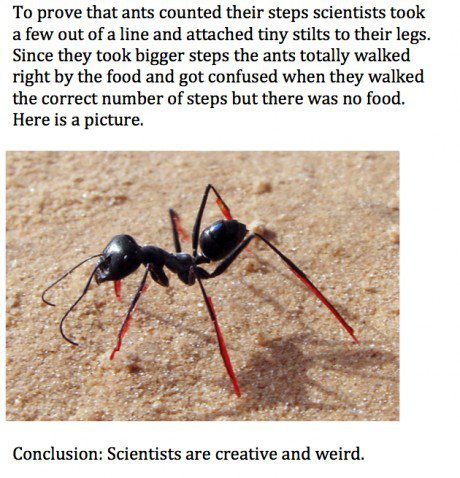curlicuecal:bragd:curlicuecal:thesquirrelisonfire:the-unreadable-book:whimsicalspecks:orzh
curlicuecal:bragd: curlicuecal: thesquirrelisonfire: the-unreadable-book: whimsicalspecks: orzhov-fun-police: autisticnarset: tumorhead: vaigh: tony-the-intelligent-goon: ashiibaka: Science. I can’t tell what my favorite part is, but it’s either scientists wasting budget and time to see if ants count their steps the idea to put ants on stilts there had to be a guy who made ant stilts and put them on the ants confused ants OR E. All of the above. BUT WAIT THERES MORE! Can mantids wear and see in 3D glasses? YES THEY PUT LITTLE GLASSES ON MANTIDS Do honey bees suffer from sleep deprivation? YES Here is the BEE INSOMNIATOR. They put MAGNETS ON BEES and WIGGLED THEM TO KEEP THEM AWAKE How do scales help snakes move? Well they put SNAKES IN LITTLE SHIRTS to find out! SHRIMPS ON A TREADMILL biology is the greatest bad and naughty children get put into the bee wiggler to atone for their sins The best thing about the ant one is that somebody clearly was like “Oh well ants probably count their steps” and that was just like… a thought that came into their head. THE BEE WIGGLER This demonstrates that discovery requires madness. gravity was discovered because Newton just so happened to have an apple fall on his napping ass what do you think science is This is a cool post but AAAH I need to talk about the ants. >somebody clearly was like “Oh well ants probably count their steps” and that was just like… a thought that came into their head. Not just any ants–desert ants! See, most ants lay down scent trails to find their way around. But in the desert the damn ground blows away constantly. So how do desert ants find their way around? Maybe they count. >scientists wasting budget and time to see if ants count their steps Okay but like. Ants can count. Ants have teeny teeny tiny brains and they can count. Do you know how teeny an ant brain is? Because I have spent time dissecting them out and let me tell you it is one of the most ridiculous occupations I have ever engaged in. They are like period sized. <–these things here at either end–>. And the really cool thing about finding out that a teeny tiny brain can do a thing, is that the brains are simple enough that we actually might have a shot at figuring out precisely how they efficiently encode the ability to count. And then we can apply that to things like math and computers and living human brains, which we aren’t allowed to dissect very much because reasons. Also, this was an awesomely clever experiment because do you want to know the budget for gluing stilts on ants to see what happens? Really small. Like ant brains. >there had to be a guy who made ant stilts and put them on the ants Their names were Matthias Wittlinger, Rudiger Wehner, and Harald Wolf, and the stilts were boar hairs! Also there was a second part of the experiment where they trimmed the ant legs to make them take shorter steps, but no one ever talks about that part because it’s less cute and more morbid. :O (It’s… slightly less morbid when you know this kind of thing happens naturally to ants with age and high temperatures. Life is hard for ants. But they are excellent at counting.) >Science. I know right? but why shrimp on threadmill? what was the science here? Can shrimps get swole? Oh! I have answers!This one is also SO IMPORTANT TO ME because it came up a while back when people were complaining about National Science Foundation funding and trying to cut budgets for research. (It was a whole big republican thing, look it up). And one of the examples was “egghhhh, scientists are wasting our money building treadmills for shrimp” with, I guess, the assumption that scientists do things for shits and giggles and to film sweet youtube videos, and that any project funded by a government agency hasn’t gone through an intense screening process to demonstrate scientific & public merit.Alright, so I haven’t even looked up the paper and I can tell you off the top of my head that treadmills are a great way to measure:activityfitnessendurancestrength(?)speedability to evade predatorswhich are traits that we very often want to measure in a diversity of organisms.Here are some important questions you could address with shrimp treadmills:How is pollution affecting shrimp fitness?Does X nutrient make shrimps healthier/faster/more active, with consequences for shrimp farming and effects of shrimps on the ecosystem?How does shrimp activity level correlate with other interesting behaviors (risk-taking, aggression, ) and how are these genetically encoded and linked?Are faster shrimp more likely to survive/spread into new locations/perform well in shrimp farms or whatever they grow shrimp in?Okay, so those are just what I brainstormed right now. I don’t actually know what the hot questions in shrimp are. Now I’ll look up the actual study by Dr. David Scholnik. So:He spent $50 making his treadmills from scrap parts.Treadmills allow the measuring of behaviors shrimp don’t normally exhibit in the lab (sans predators, lots of space, etc.).His ultimate research goal is to increase food safety (this means year to year certainty that human populations will have enough food to eat.) Our aquatic food resources are hella vulnerable right now due to overfishing, pollution, ecosystem disturbances, invasive species, etc. His study is part of a larger project looking at how shrimp’s immune systems respond to ocean warming and pollution. (a/n: BAM! got it in one)Thus: Science. :D -- source link
Tumblr Blog : memewhore.tumblr.com
#science#sciblr#scienceblr#scientific literacy
